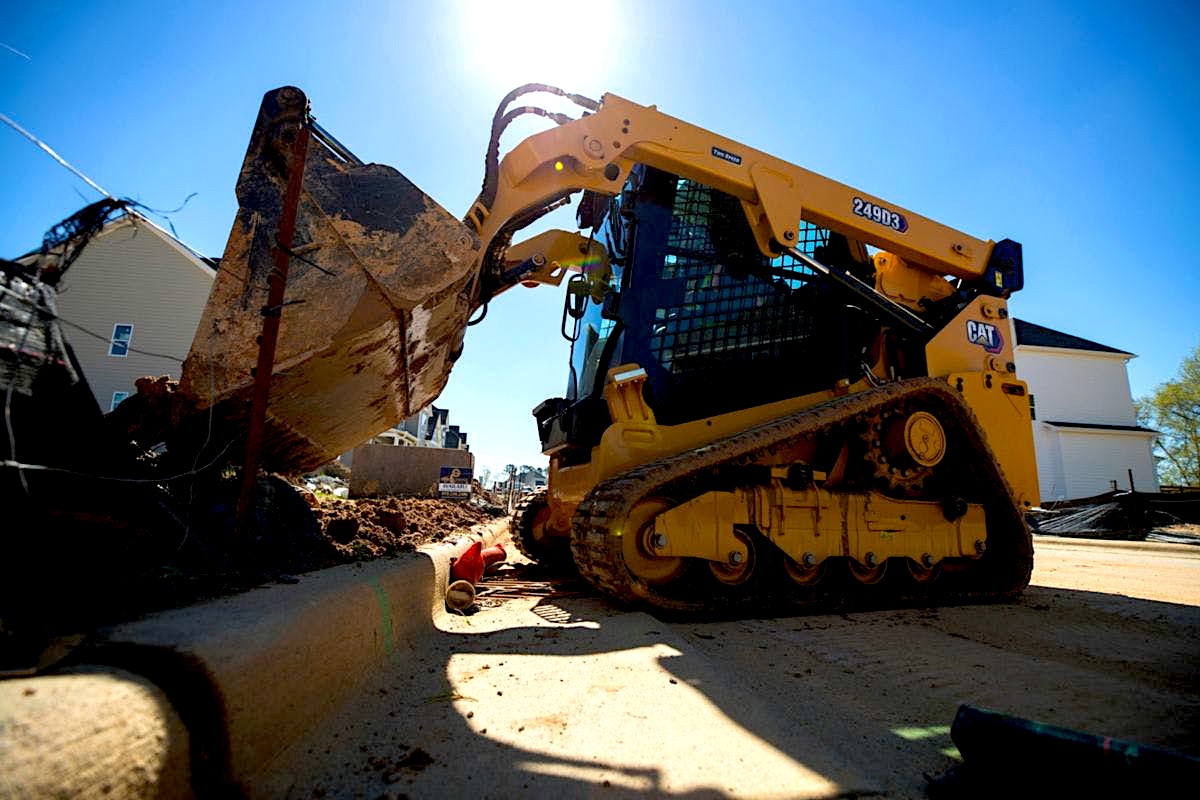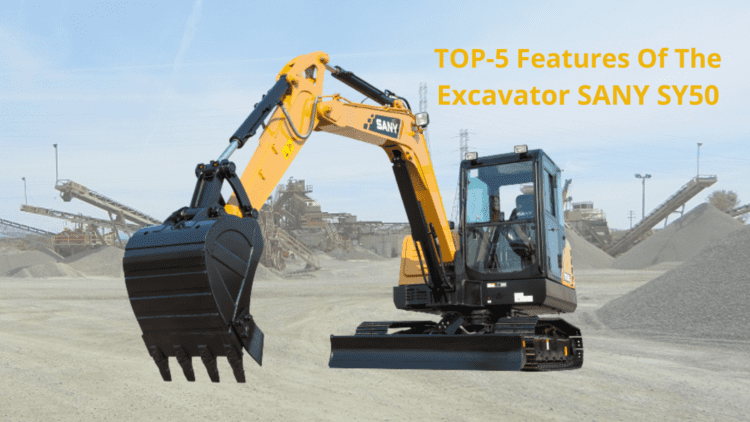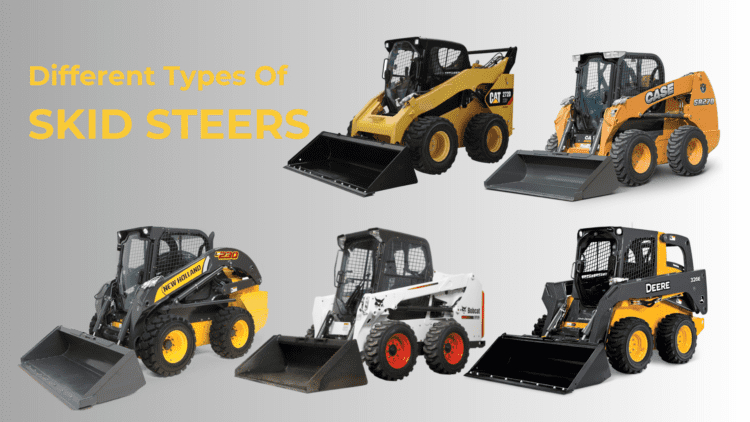Choosing between a radial lift and a vertical lift skid steer can significantly impact your project’s efficiency and outcome. Each type offers unique advantages tailored to specific applications, making it crucial to understand their differences. This comprehensive guide will explore the applications, attachments, mechanical differences, and specifications of radial and vertical lift skid steers, will also match characteristics of radial lift vs vertical lift, helping you make an informed decision for your construction or landscaping needs.
Radial Lift Applications
Radial lift skid steers are designed with a single pivot point, offering a broad arc of movement. This design makes them ideal for ground-level work and tasks requiring extensive forward reach at mid-range heights. Radial lift skid steers excel in applications such as grading, digging, and backfilling, where their curved lift path provides optimal performance.
Radial lift skid steers can be equipped with a variety of attachments to enhance their versatility. Common attachments include buckets for digging and loading, grapples for handling debris, and augers for drilling holes. These attachments are specifically designed to take advantage of the radial lift’s movement, providing maximum efficiency in ground-engaging tasks.
Vertical Lift Applications
Vertical lift skid steers feature a lift path that moves straight up and down, providing higher reach and lift capacities compared to radial lifts. This design is particularly beneficial for tasks that involve loading materials into trucks or stacking pallets. Vertical lift skid steers are preferred in applications where precision and vertical reach are critical, such as material handling, landscaping, and construction.
Vertical lift skid steers are compatible with a wide range of attachments, including pallet forks for lifting and transporting pallets, sweepers for cleaning job sites, and trenchers for digging precise trenches. These attachments leverage the vertical lift’s high reach and lift capacity, enhancing productivity in tasks that require elevation and stability.
Radial Lift vs. Vertical Lift
Understanding the key differences between radial and vertical lift skid steers is essential for selecting the right equipment for your needs. While both types offer unique advantages, their performance varies significantly based on the specific application.
Vertical Lifts Have Greater Vertical Reach
Vertical lift skid steers are designed to reach higher elevations, making them ideal for tasks such as loading trucks and stacking materials. The vertical lift path allows for consistent lift capacity throughout the entire range, providing stability and precision at greater heights.
Radial Lifts Have Greater Forward Reach At Mid-Range Heights
Radial lift skid steers excel in applications requiring forward reach at mid-range heights. The single pivot point and arcing lift path enable these machines to extend further forward, making them suitable for digging, grading, and backfilling operations.
Vertical Lifts Have a More Complex Mechanical System
The mechanical system of a vertical lift skid steer is more complex than that of a radial lift. This complexity allows for the straight up-and-down lift path, but it also means that vertical lifts typically require more maintenance and may have higher operational costs.
Radial Lifts Are Typically Less Expensive
Radial lift skid steers are generally more affordable than their vertical lift counterparts. The simpler design and lower manufacturing costs make them an economical choice for projects where the benefits of vertical lift are not necessary.
Vertical Lifts Offer More Stability
Vertical lift skid steers provide enhanced stability, especially when handling heavy loads at height. The vertical lift path maintains the load closer to the machine’s center of gravity, reducing the risk of tipping and increasing operational safety.
Vertical Lifts Require More Maintenance
Due to their more complex mechanical systems, vertical lift skid steers often require more frequent maintenance. Regular upkeep is essential to ensure optimal performance and longevity, making it important to consider maintenance costs when choosing a vertical lift.
Radial vs. Vertical Lift Skid Steer Specs
When comparing radial and vertical lift skid steers, it’s essential to consider their specifications. Radial lift skid steers typically have lower lift heights and capacities but offer superior forward reach. Vertical lift skid steers, on the other hand, provide higher lift capacities and reach, making them suitable for tasks that require elevation and stability.
Radial vs. Vertical Track Loader Specs
Track loaders, like skid steers, are available in both radial and vertical lift configurations. The choice between radial and vertical track loaders depends on the specific requirements of your project. Radial lift track loaders are better suited for ground-level work, while vertical lift track loaders excel in tasks requiring high lift and reach capacities.
Radial vs. Vertical Skid Steer: Which Lift Type Should I Choose
Choosing between radial and vertical lift skid steers depends on the specific needs of your project. Consider the following factors to determine which lift type is best suited for your application.
When to Choose Radial Lift:
- Ground-level work. Radial lift skid steers are ideal for tasks such as grading, digging, and backfilling.
- Forward reach. If your project requires extensive forward reach at mid-range heights, a radial lift skid steer is the better choice.
- Budget constraints. Radial lift skid steers are generally more affordable and have lower maintenance costs.
When to Choose Vertical Lift:
- High lift tasks. Vertical lift skid steers are perfect for loading materials into trucks or stacking pallets.
- Precision and stability. If your project requires precise handling of heavy loads at height, a vertical lift skid steer offers superior stability and control.
- Long-term investment. Despite higher initial and maintenance costs, vertical lift skid steers provide enhanced performance and safety for tasks requiring elevation.
The Bottom Line
Understanding the differences between radial and vertical lift skid steers is crucial for selecting the right equipment for your project. Radial lift skid steers offer superior forward reach and affordability, making them ideal for ground-level work and budget-conscious projects. Vertical lift skid steers, with their higher lift capacities and stability, are better suited for tasks that require elevation and precision. By considering the specific needs of your application and the unique advantages of each lift type, you can make an informed decision that enhances productivity and efficiency on your job site.




